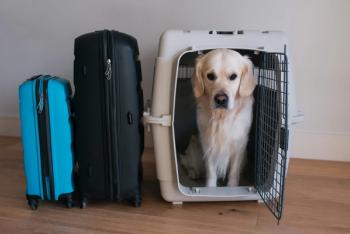
USDA orders inquiry into rendering incident
USDA orders inquiry into rendering incident
Washington-The Food Safety Inspection Services (FSIS), a federal independent review unit, is conducting a "rigorous" investigation as to why a cow showing signs of brain disease was rendered without being tested for bovine spongiform encephalopathy (BSE).
The April 27 incident at a Texas slaughterhouse breaks protection protocols updated by the Animal Plant Health Inspection Service (APHIS) after a Washington cow tested positive for BSE, or mad cow disease, in December. At presstime, the U.S. Food and Drug Administration (FDA) pulled 200,000 pounds of rendered material to ensure the cow's remains are not mixed into meat or bone meal for animal feed. At this point, there is no way to determine whether or not the cow suffered from mad cow disease, FDA spokeswoman Linda Grassie says.
"It was said right off that the cow never got into the human food supply, however, everyone knows its was rendered," Grassie says. "People are concerned about that rendered material. I think someone screwed up."
Surveillance plan
USDA officials did not offer public comment, but instead sent press releases containing information on APHIS protocols. It's not required, only requested that cattle suspected of BSE not go to inedible rendering until tested and samples come back negative, officials say.
The protocols are: FSIS must notify APHIS when an animal exhibits signs compatible with central nervous system disease. APHIS policy is to sample all cattle condemned by FSIS on ante-mortem inspection, regardless of age. Once the FSIS veterinarian makes a condemnation decision, the cow is promptly and humanely euthanized, and FSIS should have its head refrigerated if sample collection is delayed. If APHIS does not take a sample, the appropriate Area Veterinarian In Charge (AVIC) must document the name of the FSIS veterinarian and specify reasons either the animal did not meet sampling criteria or why the sample quality was unacceptable.
Cattle carcasses can go to incineration or a lined landfill in accordance with state and local requirements, USDA reports.
Training for veterinarians
While USDA officials await the investigation report, conducted by the Office of Program Evaluation, Enforcement and Review, it kicks off an enhanced surveillance program. The program, expected to be unveiled this month, is designed to target as many animals as possible from the populations considered to be at highest risk for BSE, including animals with signs of central nervous system disorders and nonambulatory animals. Approximately 20,000 apparently healthy older animals also will be included in this sampling, officials say.
"As part of this effort, USDA is providing comprehensive training on USDA BSE sampling collection protocols to APHIS and FSIS employees, state veterinarians, accredited veterinarians and participating veterinary technicians," say APHIS Administrator Dr. Ron DeHaven and FSIS Administrator Dr. Barbara Masters in a joint statement. "The additional training effort will help ensure that clear communication occurs regarding collecting samples."
Newsletter
From exam room tips to practice management insights, get trusted veterinary news delivered straight to your inbox—subscribe to dvm360.




